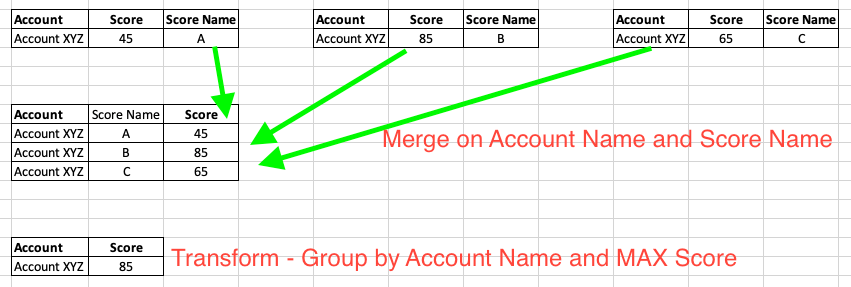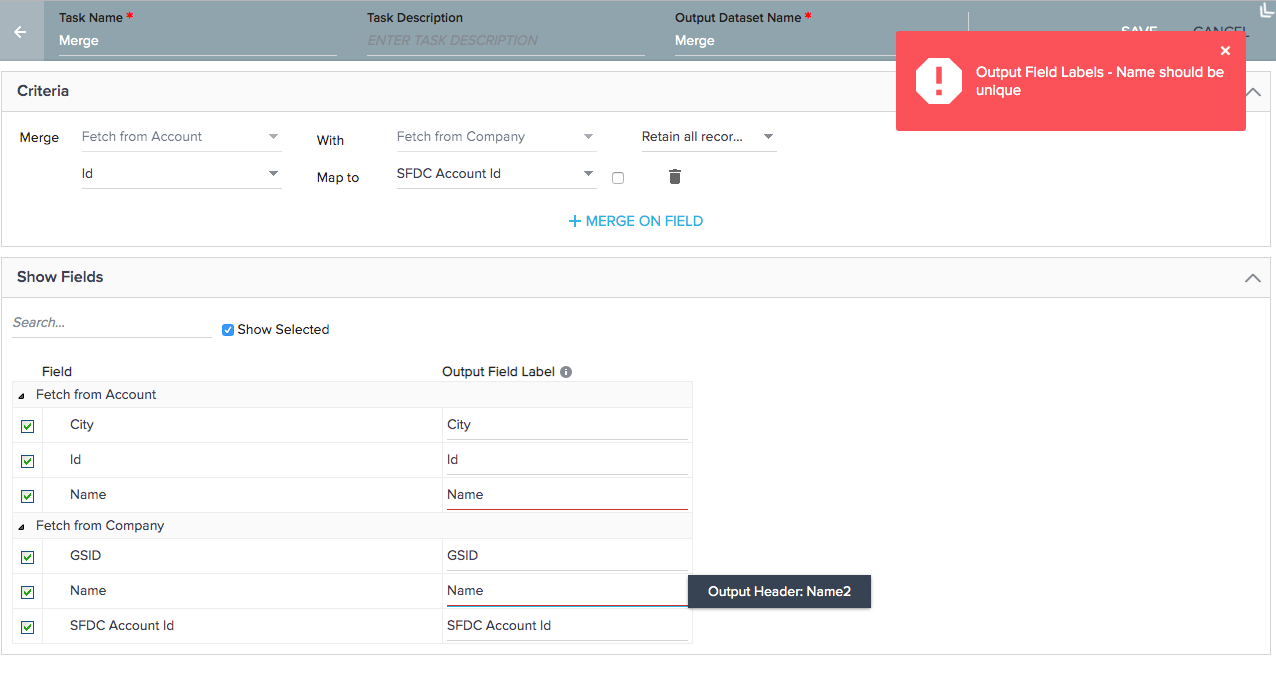I currently have data stored in a table in horizontal format (table 1) that I need to convert to a vertical format (table 2) so I can get it to the final desired format of table 3.
I've tried multiple ways to transform how the data is formatted in table 1 directly to the format of table 3. There may be a way to do this but I can't seem to figure it out and the documentation i've stumbled upon hasn't been much of a help. A potential path forward would be put the data in a intermediary stage as shown in table 2 and then aggregate on 'Scores' and Group by Account (ID). However, I haven't had much success in gettin the rules engine, specifically the pivot task, to do this for me either. Anyone have any suggestions?
Shane
Sign up
If you ever had a profile with us, there's no need to create another one.
Don't worry if your email address has since changed, or you can't remember your login, just let us know at community@gainsight.com and we'll help you get started from where you left.
Else, please continue with the registration below.
Welcome to the Gainsight Community
Enter your E-mail address. We'll send you an e-mail with instructions to reset your password.






